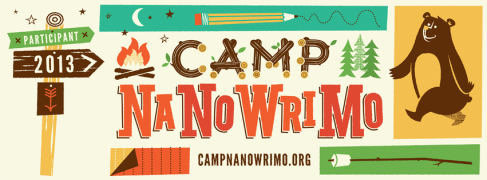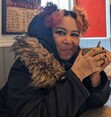Sumiko Saulson's Blog, page 46
August 9, 2013
Interview with Eric Muss-Barnes, author of “The Vampire Noctuaries”
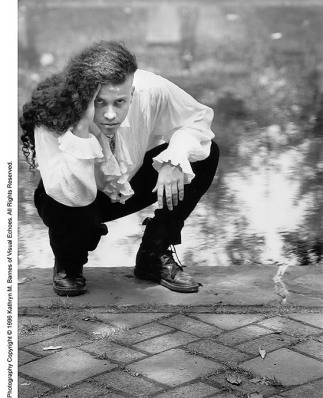 Novelist and author Eric Muss-Barnes was born and raised in Ohio. His grandest literary work to date is an epic 294,000 word vampire duology entitled The Vampire Noctuaries, beginning with The Gothic Rainbow and concluding with Annwn’s Maelstrom Festival. He has released a “vocational autobiography” detailing the humorous ups-and-downs leading him from his hometown to Hollywood, in a book entitled How You Can Get a Job at Walt Disney Studios Without a College Degree. In addition to his work at Walt Disney Studios, he has written, directed and produced an award-nominated, critically-acclaimed short-film entitled The Unseelie Court, a movie screened in numerous film festivals across the country and is available on DVD. His writing has been published in numerous magazines around the world and within multiple anthologies, such as Tales From The Dark Tower and The Skateboarder’s Journal – Lives on Board, while his professional photography has been exhibited and sold in art galleries from Cleveland to Los Angeles. His second book, entitled Schooling Your Boss To Not Suck, regales amusing tales of unfortunate managers at various jobs he’s held over the years while Forever Loving You is the tongue-in-cheek title of his book of poetry and axioms. Eric Muss-Barnes lives in Los Angeles, California.
Novelist and author Eric Muss-Barnes was born and raised in Ohio. His grandest literary work to date is an epic 294,000 word vampire duology entitled The Vampire Noctuaries, beginning with The Gothic Rainbow and concluding with Annwn’s Maelstrom Festival. He has released a “vocational autobiography” detailing the humorous ups-and-downs leading him from his hometown to Hollywood, in a book entitled How You Can Get a Job at Walt Disney Studios Without a College Degree. In addition to his work at Walt Disney Studios, he has written, directed and produced an award-nominated, critically-acclaimed short-film entitled The Unseelie Court, a movie screened in numerous film festivals across the country and is available on DVD. His writing has been published in numerous magazines around the world and within multiple anthologies, such as Tales From The Dark Tower and The Skateboarder’s Journal – Lives on Board, while his professional photography has been exhibited and sold in art galleries from Cleveland to Los Angeles. His second book, entitled Schooling Your Boss To Not Suck, regales amusing tales of unfortunate managers at various jobs he’s held over the years while Forever Loving You is the tongue-in-cheek title of his book of poetry and axioms. Eric Muss-Barnes lives in Los Angeles, California.
The Books
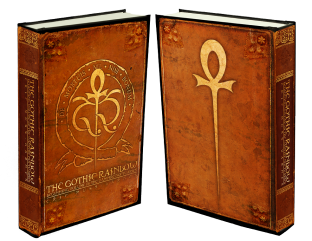 The Gothic Rainbow is a novel story set in a dark, faeriepunk version of the 20th Century underground nightclub scene. With a bit of surreal embellishment to enrich the tale, this novel was inspired by the parties, the places, the people and the atmosphere encompassing my exposure to several years of the gothic/industrial counterculture.
The Gothic Rainbow is a novel story set in a dark, faeriepunk version of the 20th Century underground nightclub scene. With a bit of surreal embellishment to enrich the tale, this novel was inspired by the parties, the places, the people and the atmosphere encompassing my exposure to several years of the gothic/industrial counterculture.
Written in first-person, the tale is focused upon dreary chasms of the human condition and tells the journey of a young male vampire and his relationship with a teenage mortal girl, Helle. Thinking he is only a spirit that communicates with her in dreams and rituals, Helle slowly comes to discover that he is very real and will change everything in her life forever. The sequel is Annwn’s Maelstrom Festival.
The Interview
Q. Although you began writing “The Vampire Noctuaries” in the early nineties, many of the experiences of the characters bring to mind the goth and death rock scenes of the mid eighties. How much influence did that scene, and the nineties goth scene, have on the formulation of your characters?
A. The gothic/industrial/underground clubscene was a massive influence on the books. In fact, it was so influential, the title of the first book, The Gothic Rainbow is an eponymous reference to a goth/industrial nightclub in the story. Even the climax of the sequel, Annwn’s Maelstrom Festival takes place at a festival concert inspired by the first Lollapalooza in 1991. In my personal life, I got into that music in 1987, but I didn’t really start clubbing and going to shows until about 1989, so for me, the 80′s and 90′s eras blended together in a single time. I don’t really differentiate the decades. Thankfully, I was living in Cleveland at that time and, as anyone familiar with the history of that music can tell you, a majority of the most influential American bands in the scene were born in those rustbelt towns between Chicago and New York. Many quirks of characters and events in the story were based upon actual experiences I had during those years. So, yes, The Vampire Noctuaries duology is very much an allegorical history of that time period, with fictionalized vampires thrown into the mix.
Q. Would you consider Helle DuBois, the point of view character for the second book in your series, “Annwn’s Maelstrom Festival” to be a strong female protagonist?
A. Fundamentally, that depends on one’s definitions of strength and weakness. What kind of female is stronger? The girl who fights off her attacker and is never abused because she kicks so much ass? Or the girl who survives abuse and endures the aftermath? Would a girl be weak if she completely gave her heart and soul to love, and all the vulnerability that such a resignation entails? Or would real weakness be to shut yourself off from people and never feel love for anyone? I see Helle as all of the above. Despite her great power, she frequently uses it in ways that are violent and cruel and psychotic, and I think that’s inarguably a weakness. She’s also completely consumed by an obsessive and almost symbiotic love for Elric. To me, giving that much of yourself to another, and being subservient to that passion, is a sign of great strength and fortitude. Others would disagree and say it’s a weakness to weave your own identity so deeply into another. Thus, ultimately, her “strength” or “weakness” is relative to your own point of view. As far as I’m concerned, her strengths and weaknesses manifest in different facets of her personality, thus, I see aspects of Helle as both a “weak little girl” and a “strong and confident goddess”, all wrapped up in one. I feel that dynamic, and those contradictions, make her endearing. She’s not always a strong girl to admire. She’s not always a weak girl to pity. She’s both. She’s basically the amalgam of every goth girl I ever dated… if they had been megalomaniacal vampires.
Q. The book cover text from your first novel “The Gothic Rainbow” states that it is “a story carved from the part of your soul that knows more agony than all.” – do you think that your story relies heavily on psychological aspects and the internal life of it’s character to tell their stories?
A. Definitely. I would often create promotional fliers written in second-person, in an appeal to connect with the fanbase I knew would appreciate these books. This is for the kids who are the outcasts and the freaks. This is for the goth kid with no friends. But this story is also for the popular cheerleader, who has never told anyone about the horrible thing that happened to her at the frat party. It’s not about who you are on the outside. It’s about what has happened to you inside. I constantly emphasise to people that The Vampire Noctuaries does not have any of the typical cliches of vampire stories. These characters were invented in 1991. That’s before Buffy the Vampire Slayer, before Twilight, before True Blood and all these other trendy vampire books and movies. The Vampire Noctuaries follows none of those trends, because it existed before any of those trends were written. There are no vampire hunters, or love triangles, or werewolves, or quests to cure vampirisim, or wars between vampire clans, or a “chosen one” set to change the world. This is a story about the real pains and heartaches of life, set against a backdrop of betrayal and bereavement and vampires who revel in their power instead of lamenting it. Those are some damn fun characters to take to a Nine Inch Nails concert.
Q. One reviewer of “The Gothic Rainbow” on Goodreads said that appreciating the book required a prior understanding of the goth scene – do you think that’s true?
A. I certainly hope not. Years ago, I read a fantasy novel by a woman who wrote very confusing and complicated battle sequences. When I finished the book and read her biography, it said she was a career Marine. That explained a lot! She knew a little too much about military strategy and therefore, she couldn’t describe it in layman terms. Trudging through her terminology and descriptions was arduous. The rest of the book was fine. The rest of the book was accessible. The great irony was, the facet of the story that utilized her most abundant expertise, was the most poorly written part of the tale. Ever since that experience, I’ve always wanted to remain cognizant of such mistakes in my own writing. I never want to get so immersed in showing off my knowledge of a topic that it alienates readers who are unfamiliar with it. So, no, I don’t think readers need to be intimately familiar with the goth scene to appreciate this series, because when you get right down to it, although there are tons of references to the goth scene in the novels, this is a story about love and loss and heartbreak. I think everyone can relate to those emotions, even if they don’t own any Click Click albums.
Q. Do you consider “The Vampire Noctuaries” a paranormal romance, and what do you think of that particular genre label, and of genre labels in general?
A. Can The Vampire Noctuaries be a paranormal romance when there are no overbearing fathers forbidding lovers to meet, no girls torn between picking two guys, and no lovemaking in horse stables? The back cover of the original Gothic Rainbow categorized it as Dark Fantasy/Literature because I felt my work had every right to be granted the same respect typically reserved for the category of literature. Just today, saw an interview with Harlan Ellison, who is one of my writing idols, and he spoke about walking out of a television interview in 1980, because they introduced him as a science fiction author. He argued that he wanted to be respected as a writer and not labelled and compartmentalized. I hate granular genre labels too. I view The Vampire Noctuaries as fiction. That’s all. Since people insist upon being a bit more explicit, I can conceded to call it a “fantasy” book. In fact, I remain willing to continue calling it “dark fantasy” because, it does get pretty deep into the anguishing sides of life. But I still view it as literary too. Once you start calling a book “dark fantasy/ urban fantasy/ paranormal romance/ young adult/ new adult/ self-help /vegan cookbook” why bother to read it anymore? I think when books become “overly categorized” it can work against them, because people start making too many assumptions about what the story entails.
Q. Not all supernatural fiction is scary… you have categorized “The Vampire Noctuaries” as dark fantasy. What do think dark fantasy has in common with horror, if anything, and where do you think they diverge?
A. As I said, I hate getting too granular with labels and categories. One of the reasons I find the labels annoying is because they never serve their purpose! Labels are created to define and categorize stories, but you ask every author, every publisher, every reader, what their definitions are, and you’ll get a different answer! Some of the fools, you can see them online in forums and Twitterchats, debate with each other over definitions of a category. No one knows! So you go to all this trouble to compartmentalize a book and in the end, people still have no clue what the hell to expect when they read it! So, I can give you my opinion of what those categories mean, but that doesn’t mean anyone else will agree, nor will it mean any of us is correct. It’s all arbitrary. It’s all ambiguous. However, in answer to your question, I view “horror” as being fairly bloody and gory. That’s not my style. I’m not into that. That’s not to say there’s no violence in my story. There’s a ton of violence. I just don’t hold the camera on the carnage, so to speak. I don’t linger on it. I cut away quickly. I’m fond of saying, “I don’t write about darkness. I write about shadows.” That’s “dark fantasy” to me. “Horror” is when the thing in the woods graphically rips your throat out. “Dark Fantasy” is when the thing in the woods is just staring at you, and you feel those eyes on the back of your neck. I’m the type of person who hates horror films, but I love episodes of The Twilight Zone. Eerie and spooky turns me on. Gory and bloody doesn’t interest me.
Q. At 190k words, your first novel is a hefty tome… twice as long as some novels. What made you decide to issue your story as two books instead of three.
A. The Gothic Rainbow was supposed to be a single book. I outlined my entire story in 1993 and I started writing it in a linear fashion, beginning to end. When I hit about 300 pages, I looked at how much of my outline remained and I went, “Oh, crap. This thing is going to be 900 pages long!” I didn’t want my first novel to be a 900 page behemoth and take 5 years of my life to complete. Therefore, I picked a point about 3/4 of the way through the story where I could divide it into a 600 page book and a 300 page sequel. That’s how The Gothic Rainbow turned into The Vampire Noctuaries. The Gothic Rainbow: Beginning Volume of the Vampire Noctuaries came out in 1997 and Annwn’s Maelstrom Festival: Concluding Volume of the Vampire Noctuaries came out in 2013. Since the story was never intended to be divided into multiple books, the structure didn’t really support a trilogy or a tetrology; it became a duology simply because two books was the easiest way to divide the tale, without doing a major restructuring to the entire outline.
Q. Do you have anything else you’re working on that you want our readers to know about?
A. The writers I have always admired are the ones who write many different styles and genres of fiction. My ambition has always been to do the same. Ray Bradbury is a great example. He’s often regarded as a science fiction author, but he always saw himself as a writer of fantasy. If you read his body of work (the man published 27 novels and over 600 short stories, so you won’t read them all) you will see he wrote much more than science fiction. So, yes, I have a novel I’m working on, that I am hoping to have finished by December 2013. I’m keeping the details secret for now, but it has nothing to do with vampires or spooky things hiding under the bed. I’ve always maintained that the telling facet of storytelling is the most important part. So, hopefully, any fans who appreciate my storytelling in The Vampire Noctuaries will also enjoy the way my next story is told.
Where to Find Eric Online


August 8, 2013
Author Interview: G.L. Giles
August 7, 2013
I’ll be tabling at Convolution: The Gates of Horn & Ivory: The Realms of Dream
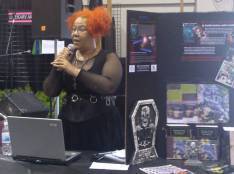
Me tabling at San Mateo Fair Author’s Day.
I am really excited to announce that I will be tabling at Convolution: The Gates of Horn & Ivory: The Realms of Dream, which is taking place November 1 – 3 at the Hyatt Regency San Francisco Airport, in Burlingame, 1333 Bayshore Highway Burlingame, California, USA, 94010.
I will be in the (brand spanking new) Publisher’s Alley, a special place for independent authors and small print publishers which is a part of a new Author & Artist Spotlight program at Convolution.
I am especially excited because Wendy and Richard Pini of ElfQuest fame will be speaking there, and I am a huge fan of ElfQuest, so don’t be shocked if I end up busting out some ElfQuest cosplay at some point over the three days.
It was always my intention to debut the sequel to “Solitude,” “Disillusionment,” at Con-Volution if I got a table there, and I have, so now I am back on track with that deadline. Speaking of “Disillusionment,” I won at Camp NaNoWriMo for getting up to 50k words on that; you will see the new icon on my page proudly announcing that. Also, you should see a countdown to Con-Volution.
Con-Volution is not the only event I’ll be appearing at over the next two months: here is information on two other events where I will be reading or tabling:
ManulFest (September 7)
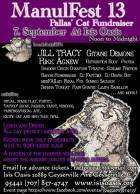 I will be reading from “Solitude” and signing at ManulFest, which is happening September 7, 2013 at Isis Oasis, 20889 Geyserville Ave., Geyserville, CA. 95441.
I will be reading from “Solitude” and signing at ManulFest, which is happening September 7, 2013 at Isis Oasis, 20889 Geyserville Ave., Geyserville, CA. 95441.
Gitane Demone with Rikk Agnew, Jill Tracy, Protea, Sublime Friction, Shadow Circus Creature Theatre, Retribution Body, DJ Fact 50 & Deathboy, Rain Graves, Serena Toxicat, Baron Reubenbauer, plays, tarot readings, and vendors are just among some of the musical acts, writers, and other entertainment and festivities at ManulFest 2013.
More information about this event will be made available in a longer post at a later time. For now, if you want to learn more, visit the weblinks above, or the event page on Facebook:
https://www.facebook.com/events/199380666890806/
Day in the Park (September 14)
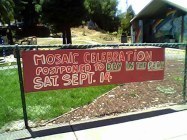 The 8th Annual “Day in the Park” with a live music stage, children’s activities, food, street vendors, and lots more! This takes place in Maxwell Park (the park itself, located between Fleming and Allendale, just past Monticello) in Oakland. I will be tabling there with my books, artwork, and sketching pictures for the kids (and adult) for a reasonable price. I hope to see you there.
The 8th Annual “Day in the Park” with a live music stage, children’s activities, food, street vendors, and lots more! This takes place in Maxwell Park (the park itself, located between Fleming and Allendale, just past Monticello) in Oakland. I will be tabling there with my books, artwork, and sketching pictures for the kids (and adult) for a reasonable price. I hope to see you there.
More information available at the Facebook Event Page:
https://www.facebook.com/events/493710857371518/


July 29, 2013
Get “Solitude” on sale for just over a dollar!
In celebration of my reaching 50k words and (finally) WINNING at (Camp) NaNoWriMo, I am going to put “Solitude” on sale. This is the first time I’ve ever put “Solitude” on sale, but since my NaNoWriMo project “Disillusionment” is Part 2 in the Solitude Saga, well, it makes perfect sense.
You can get “Solitude” in multiple eBook formats at Smashwords for $1.02 between now and August 1, 2013 with this coupon code: ER57A
https://www.smashwords.com/books/view/326403
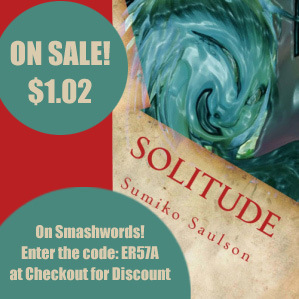
Get it for $1.02 with the coupon code today!
DESCRIPTION:
“To what extent does the presence of others affect our thoughts and actions? What do we believe when we are truly alone? Solitude is the riveting tale of diverse individuals isolated in a San Francisco seemingly void of all other human life. In the absence of others, each journeys into personal web of beliefs and perceptions as they try to determine what happened to them, and the world around them. “
REVIEWS:





Horror for the intellectual, July 24, 2013
By
David (Milwaukee Wi) -
Imagine being in your car one day and suddenly all the people vanish. The cars, trucks and buildings are still there. The animals are still there also but they’re not how they use to be. The world is a different place, there are forces at work that are changing everything and they may never be the same.
This is the story behind Sumiko Saulson’s Solitude. Solitude is about seven very different people and how they react to being alone after civilization disappears. One of them goes mad and talks to people who aren’t there. One goes to the zoo and frees all the animals and two others treat the whole situation like they are trapped in a video game.
When I first heard of Solitude I really liked the idea. The concept of being totally alone is a fear of mine and I was curious as to how each character would react, but there is more to the story then that. Solitude also gets into mythology and the supernatural as you find out why things are the way they are.
There is a lot to like about Solitude. One of those things is how the city of San Francisco itself is a character. Even though I’ve never been there , I felt I had been when I was done reading it. Sumiko really did her homework in the writing of this book. Each time there was an isolation as its called in the book, it corresponds to an earthquake that really happened. The book also gets into religion and touches on the subject of how something sinister can effect us on a personal level and how our world can be changed when something wants what we have.
One of my favorite scenes in the book was when a spirit takes over one of the character’s bodies and cries as he realizes that another character has died. At this point you are thinking that the spirit is evil and even the person whose body the spirit takes over wonders if the spirit is faking, but you soon find out that the spirit is not what it seems. I also liked the character of Angela who seems to be at the mercy of several external influences. I looked at her as a tragic character, she comes across as evil in the book but she doesn’t try to be, she just reacts to things in her environment the wrong way.
If I was to compare Solitude to anything, it would probably be to Stephen King’s The Stand or Beneath The Dome. You can also compare Sumiko’s writing to Anne Rice. The subject matter may not be the same but Anne Rice got into her character’s heads and Sumiko Saulson does the same thing. By the end of the book I felt I knew each character personally and it was hard to see them suffer.
I would classify this book as psychological horror. Because Sumiko doesn’t seem satisfied giving you a book that will entertain you and give you a couple of quick scares. No that’s to easy, Sumiko wants to make you think and then give you nightmares. Twice while reading this book I stopped and thought about the ideas that Sumiko was trying to get across, such as being at the mercy of forces greater than yourself and the idea of a world within a world.
The tone of the book is a little depressing and I would have liked a couple more action scenes but this is a great read.





A lot of fun!, October 4, 2012
By Turner Morgan “turnermorgan” (San Francisco, CA United States) -
Definitely a book for those readers who know San Francisco well, Saulson does a great job of weaving in threads from SF’s past history, as well as modern history. The plot starts out with a bang of scattershot impressions of all the major characters as Something Big happens to them- and as you go on, you get to know who these people are and care more and more for them.
I’d agree with the comparisons to King’s more epic works: this one’s structured similarly, and paced in much the same way as King’s work. If you’re in the mood for something King-ish, this book can stand up proudly to that comparison.





(Im)patiently awaiting the sequel!, September 29, 2012
By M. E. Valenzuela “Desdemmonna” (Spokanistan, WA) -
Don’t read this book before going to bed, you’ll never get to sleep! The suspense and attention to character development is impeccable. You get to know and build a personal relationship with them, the story weaves and arch that binds them all together in one unexpected conclusion. READ THIS! You will love this novel.





Very good, epic novel, evocative of Stephen King’s the Stand, April 4, 2012
By neutrino78x (‘Silicon Valley’, California, USA)
This is a fascinating and epic novel, evocative of Stephen King, especially his more grandiose works such as The Stand and The Dark Tower. It involves a group of people who wake up to find that everyone in San Francisco seems to have disappeared except for themselves, and soon discover that there are great forces at work. The drama unfolds as they discover the nature of their predicament and attempt to resolve it.





By Michael Lee Totten
I love the mystery of the beginning of this novel and how it builds up in sinister intensity in its sheer horror!


I won! I finished my 50k words at Camp NaNoWriMo!
I still have to wait until August 5th to get the winner goodies, but still… excited!
The novel (Disillusionment) still isn’t done, but the first draft is around the 50% mark now. My novels average about 100k words, each previous one falling in the 80k to 125k range, and this one doesn’t look to be any different, although I won’t know for sure until it’s done.
For now, I am going to enjoy my celebratory nap. 


July 24, 2013
Solitude
 Reblogged from horroraddicts.net:
Reblogged from horroraddicts.net:
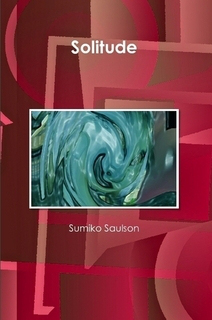
Imagine being in your car one day and suddenly all the people vanish. The cars, trucks and buildings are still there. The animals are still there also but they're not how they use to be. The world is a different place, there are forces at work that are changing everything and they may never be the same.
This is the story behind Sumiko Saulson's…
July 23, 2013
Interview with Tristan Slaughter, author of “Butterflies in Blood”
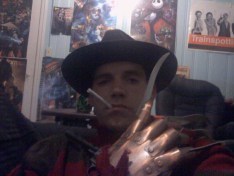 Tristan Slaughter was born in Burlington North Carolina. Raised around his cousins makeup/fx haunted house, The Original Hollywood Show he began writing at an early age. First starting with poetry then gradually, his stories got darker and more violent. With a strong love for movies and comics, his stories are meant to be a bit more cinematic. He has also written various stageplays, screenplays and numerous poems. With a heavy emphasis on dark, graphic violence and usage of sex, many of his earliest stories have landed Slaughter in much trouble from therapists to a heavy loss of friends. Preferring to spend his time alone and writing whatever comes to mind, Slaughter is more reclusive than anything else. Although he spent two years in L.A. California, this only inspired his writings to grow more hateful, growing his strong dis-taste with Hollywood. Focusing his hate and anger into his writings, Slaughter aims to be like no other writer, whether bad or good. He taunts both readers and critics alike but mainly its all just play. Tristan Slaughter resides in Burlington, N.C. with his wife and daughter. Both of whom have learned to love his bizarre and reclusive lifestyle.
Tristan Slaughter was born in Burlington North Carolina. Raised around his cousins makeup/fx haunted house, The Original Hollywood Show he began writing at an early age. First starting with poetry then gradually, his stories got darker and more violent. With a strong love for movies and comics, his stories are meant to be a bit more cinematic. He has also written various stageplays, screenplays and numerous poems. With a heavy emphasis on dark, graphic violence and usage of sex, many of his earliest stories have landed Slaughter in much trouble from therapists to a heavy loss of friends. Preferring to spend his time alone and writing whatever comes to mind, Slaughter is more reclusive than anything else. Although he spent two years in L.A. California, this only inspired his writings to grow more hateful, growing his strong dis-taste with Hollywood. Focusing his hate and anger into his writings, Slaughter aims to be like no other writer, whether bad or good. He taunts both readers and critics alike but mainly its all just play. Tristan Slaughter resides in Burlington, N.C. with his wife and daughter. Both of whom have learned to love his bizarre and reclusive lifestyle.
The Book:
Several short stories of terror and madness. From werewolves and Goddesses to Vikings and Gorgons. Slaughters bizarre writing style never ceases to astound.
The Interview:
 Q. What was it like being exposed to horror movie sets at a formative age? Did it affect your writing style?
Q. What was it like being exposed to horror movie sets at a formative age? Did it affect your writing style?A. Being exposed to horror sets at a young age probably did leave a heavy impression on me. But honestly I can’t really say so as I spent more time with older people, most with tattoos and freaky piercings (of which I found I loved being around). I can say I had more fun there than anywhere. Getting to watch people dress up as Freddy or Frankenstein or The Fly became how most of my youth was spent. I myself got to dress as a clown at first and spin a skull in front of the crowd until a bigger clown came from behind them. Then I played a zombie and a troll. I played more as I got older, Scream and Chop-top becoming my top roles (even wound up taking pictures and giving autographs as Chop-top). I learned about “adult conversations” probably before I should have. I’m very thankful for all that. To be fully honest though, I don’t believe that affect my writing style. What did was Tales from The Crypt (the Santa episode in particular) and (horribly) Troll 2.
These two things inspired my first full story (which landed me with a therapist,and a dosage of Ritalin) which was about Santa and his elves attacking a house and killing the family (and the family was Trolls with green blood). The story was taken by a teacher and I was pulled from school and forced to see a therapist (as I apparently was troubled), and later my dad was very angry with me. Of course I never got the story back. And I found I wanted more and would later (in High school) write far worse stories inspired by real life events (one story got me pulled from class by cops and searched). But the horror sets and haunted houses never really inspired my writings, only my acting.
Q. What can you tell our readers about the Randy and Walter Trilogy? Do they have to be read in order to follow them, or could someone just pick up number two say, and read it out of sequence and understand it?
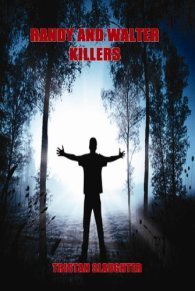
A. Heres what I will say about Randy and Walters trilogy. I am attempting to write the single most violent yet unique series ever. But the last two are far different than the first one (killers) I can’t say how as it will be giving it all away. The 2nd part (American Wasteland) is a great jumping off point. Parts 2 and 3 do have to be read in order as they go together. The 1st part was kind of a mistake and one I seek to rectify with Part 2. Still, I stand by the 1st book as on it’s own.
Q. Will the trilogy ever be more than three books and thus no longer a trilogy, do you think, in the future?
A.No there will never be another Randy and Walter story. After 3, that’s it. The end. Writing these books takes to much out of me and damn near drives me crazy each time as they take pure rage to write accurately. This trilogy is very destructive and for that, no more books of this series, ever.
Q. Where did you find your inspiration for the short stories in “Butterflies in Blood?”
A. Different things. Places. For one, I love Lycans so I wrote my own Lycan tale (Tooth and Nail) which I would love to turn into a movie. The others come from my love for Greek and Norse Mythology. There is no single inspiration as I just wrote them as they came to me.
Q. Is there one story that is your favorite of them, and if so which one?
A. The stories are so vast and many I kinda love them all. The two stories I worked the hardest on was Tooth and Nail and Arden. With Tooth I wanted to tell a new form of Lycan story with my own ideas of how Lycans should be (full bloods age in dog years, for example, and can turn whenever they wish). With Arden I wanted to tell a Norse mythology type story. Simple, but I did a lot of Norse God research to do it. Butterflies in Blood is a collection of different forms of story telling, though, each story is vastly different. Some with morals, some not. I do plan to add more stories, though. It may expand and grow bigger as I always come up with new short stories.
Q. The stories in “Butterflies in Blood” are pretty gritty and often combine violence with disturbing imagery. You say in the introduction you hope your daughter never reads it. What do you find most disturbing about the stories?
A. To me I don’t really find any of it disturbing. I’m sure others may find many things disturbing. I know its violent and dark (not to mention highly sexual), but all those things, to me at least, are parts of life. Randy and Walter; Killers disturbs me, but that’s because now I have a child I look at certain things differently.
Q. “The Overgrown Forest” in particular, and also your introductory poem, seem to have a message. I took “The Overgrown Forest” as having some kind of message about the ecology, for example. Is that the case, and if so, would you care to elaborate?
A. When I first wrote BNB it was meant to be a critic smack around (I purposely un-edited things, miss-spelled words, etc.) I also added hidden messages and jokes and games. This was meant to bring readers in and simply, have fun. After I re-wrote it, I started putting meaning behind certain things. The Opening poem, In Blood, I wrote after hearing the news talk about the killing of an infant. Then a week later, it was like everybody just forgot about it and moved on to the next celebrity marriage. A tragedy happens, however small or large, and at the time its everywhere you go. Then its all over , and we’re all talking about celebrities or whats wrong with the food we eat. The line about dogs and cats and not devouring them, I believe that a person should only kill an animal to eat (survive) and if they don’t, whats the point? For fun? A trophy? The Overgrown forest also has a message, it stems from about the same principal. A lot of stories in it no have certain morals and messages. From, Dykes (about homophobia) to Puppies (animal abuse) Lesson (child abuse, endangerment) Medusa (which I wanted to tell her story in her eyes, read the real Greek myth, Poseidon rapes her on the floor and Athena curses her. Greek Gods were assholes. There’s a lot to that)
You’ll find that a lot of my books have morals of some sort.
Q. Is there anything you’d like to tell our readers that we haven’t already covered?
A. Although some (and most have) seen me and my stories as misogynistic, sexist and uplifting rape and violence, the truth of it is far more complicated. As much as I write about them, I never take it lightly. I’ve explained this in person before, so I’ll say it now and explain the story Mad Fist Disease. At the end of that, the main character goes home and “rapes” his wife though he doesn’t really. The point was their relationship had become standard, non-passionate. They both (her included) wanted more passion, but one had to make a move. Of course, later he squanders it all. But just read it, carefully and you’ll get it. Especially if you are or have been married. But, never ever think I take violence of any kind lightly, I don’t. This is just a violent world we live in, and to survive it you gotta face it.
Where to Find Tristan Online:
Randy and Walter: Killers on Amazon
Butterflies in Blood on Smashwords (FREE!)


July 17, 2013
The Moon Cried Blood is Free Today
“The Moon Cried Blood” is free on Amazon for the Kindle. You can get it here.
If you don’t have the Kindle, you can get a free Kindle Reader application from Amazon for your Mac, PC, tablet or smartphone here.
Book Description
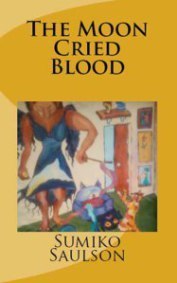 It is said that the Wolf may howl at the Moon, but the Moon never howls at the Wolf.
It is said that the Wolf may howl at the Moon, but the Moon never howls at the Wolf.
In the gritty urban streets of Los Angeles in 1975, Leticia Gordon is forced to come to terms with many things: the tragic death of her stepmother and baby sister in a car accident, fear she’ll wind up in foster care, and the sudden revelation she belongs to a long line of powerful witches known as Luna – who exhibit first power at the start of womanhood.
Running from foes natural and supernatural, will her newfound powers be the turning point that elevates her position of honor, or will it destroy her like the dark forces that consumed her father? In a world turned upside down where time itself seems in flux, in whom can she trust?
Book Reviews:
5.0 out of 5 stars Very powerful imagery September 29, 2012
By M. E. Valenzuela
Format:Paperback
Cycles of the moon, Generations of women, a young woman unaware of her incredible gift. A delicate weaving of history, character development and esoteric overlay that makes for an interesting saga. I read it twice, I missed a lot in the first round with all the symbolism. A lot of work went into the background and technical aspects of the writing itself and it shows.
3.0 out of 5 stars Yes! The Title and Story Match! May 19, 2013
By AF
Format:Kindle Edition|Amazon Verified Purchase
I read this book because the premise appealed to me. Who wouldn’t be enticed by the promise of a good folklore/myth played out between man, animal, and nature? And true enough, the initial chapters were as captivating as the premise but as I continued with the story, I grew impatient and confused. Even though the author attempted to help the reader keep the similar-sounding names and family lines straight by filtering and layering in information, that didn’t help. I found myself lost in a maze of characters who did not stand out strong enough for me to latch on to. I kept having to recite relationships in my head and at one point actually thought about drawing a family tree. But that’s too much work for a fiction novel. For me, one of the goals of fiction is to entertain. Perhaps if the author had done more “showing” of the story instead of “telling,” the story would have been easier to follow. Also, I think it would have helped me stay engaged if the author had tackled one generation at a time instead of throwing in the entire kitchen sink (the psychic abilities, the myth, the types of wolves, etc.) in one fell swoop. Or, if not one generation at a time at least reduce the number of generations. The author packed a lot in this story–too much. There were however some strong themes that played throughout: good versus evil, the importance of family, redemption, and more. Unfortunately, the contrived actions and coincidental outcomes did little to underscore these themes. What did I like? I think the author is quite imaginative and her research seems impeccable. I also enjoyed the revisit to the ’70s, a period of time I don’t read enough of. Plus, it thrills me to match a title with the story. I’m surprised at how many books don’t marry the two. A friend asked me if I would read another book by this author and I said, “maybe.” My “maybe” lies in the fact that the author is very creative and as Toni Morrison said (paraphrased), writers improve with every writing. And I do think this writer will.
5.0 out of 5 stars Witchcraft and family secrets July 3, 2013
By Earth Kentro
Format:Kindle Edition|Amazon Verified Purchase
A layered story. Interesting and intense. Taking you back through time and a girls discovery of her abilities. A fun read.


July 10, 2013
Writer Wednesday: Interview with Sumiko Saulson
 Reblogged from Lily Byrne Writes:
Reblogged from Lily Byrne Writes:

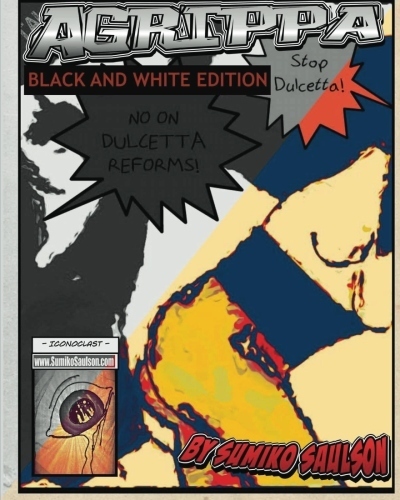
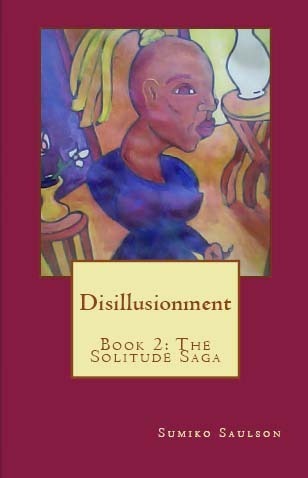
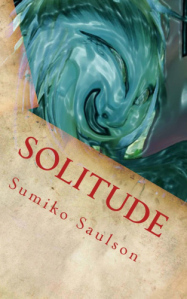
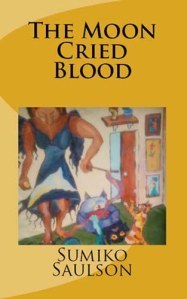
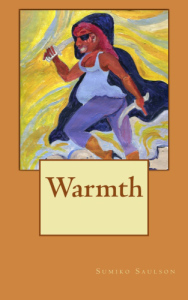

Welcome to a new series on my blog, where I interview various writers I have met recently. The first is Sumiko Saulson, horror writer.
Sumiko Saulson is the author of three sci-fi/horror novels, “Solitude,” “Warmth”, and “The Moon Cried Blood, and short story anthology “Things That Go Bump In My Head.” Born to African-American and Russian-Jewish parents, she is a native Californian, and has spent most of her adult life in the Bay Area.
July 8, 2013
The summer issue of Writer’s Muse Magazine is out!
Writer’s Muse Magazine is a free quarterly periodical featuring the works of members of the Writer’s Muse Group, a creative writing group with over 500 members, based on the concept of writers helping writers.
Writer’s Muse Group was founded by Richard Cotton and can be found on Facebook here:
https://www.facebook.com/groups/writersmusepage/
This issue features writing by: Steve Grilliot, Richard Cotton, Carolyn Saulson, Jane Risdon, Sue Van, Haven Malone, Kay Ziegler, Franchesca Saulson, Jessica Hug, Brian Von R, and Sumiko Saulson.
The Writer’s Muse Page was founded by Richard Cotton in 2012 as a place where writers could meet other writers, and get support and feedback. Originally concieved of as an online writer’s group, the small group of less that twelve people kept expanding. Although the Writer’s Muse Page is an English-speaking group, it includes members from all alround the globe.
The group started with this simple statement:
“The Writer’s Muse Page is a group where writers can share with and support one another. Any writers are welcome to join this group.”
Writer’s Muse Magazine was launched in December 2012 by Sumiko Saulson, the editor of the magazine and one of the adminstrators for Richard Cotton’s Group. The first magazine was a Christmas Holiday edition. After a six month sabatical, the magazine returned for this, the Summer 2013 edition.
Moving forward, the magazine will be quarterly, with Spring, Summer, Fall, and Winter issues coming out once every three months. For more information about this free magazine, email Sumiko at sumikoska@yahoo.com.
To join the Writer’s Muse Group, visit the Writer’s Muse Page and join here:
https://www.facebook.com/groups/writersmusepage/
Pick up your copy of Writer’s Muse Magazine at Smashwords, here:
https://www.smashwords.com/books/view/334334
On a personal note:
My mom submitted two stories to this issue: she’s in a writing class at school, and reading her writing I really get this feeling that “Wow, that’s where my writing skill came from.” I love her writing. One of her pieces is a work of fiction, and the other is an autobiographical bit about the recent passing of my father… my parents were divorced for years (since I was seven years old) but she has written a very moving piece about how she felt about her children losing their father.
My mom is Carolyn Saulson.
My niece, Franchesca Saulson, contributed a piece, and so did Jessica Hug, she’s my fiance’s sister. I hope you’ll check out their work and support them – I am very proud of Franchesca and Jessica. Also, I hope you will check out the other stories in this compilation. I really loved Steve Grilliot’s piece.
This issue contains romance, suspense, and poetry. Check it out, and if you are so inclined, leave a review for the magazine and our Writer’s Muse writers.





